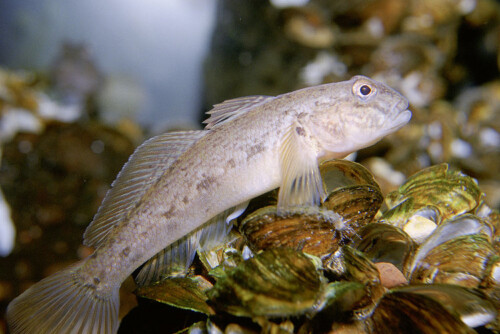Amitav Ghosh’s award-winning science fiction The Calcutta Chromosome (1995) speculates on the somatic transformations to biological life in an era where the world’s waterways have become imperiled.1 Lauded for its “hypertextual” interweaving of speculative fiction, Bengali literature, and the history of medicine, through which it challenges the West’s monopoly on “scientific” knowledge, this third in Ghosh’s growing corpus of highly regarded novels articulates a vision of biological hosting and cross-species enmeshment that is central to critical discussions of the ethical and political stakes of race, postcolonial, and femiqueer studies.2 And yet, with their commitments to conflict and antagonism as consciousness-raising and revolutionary ideals, postcolonial and race studies often regard as suspect an ethics which endorses hospitality (alternately caretaking) across conditions where parties refuse to or cannot recognize their reciprocity and interdependence.
Nonetheless, this essay dwells at length on undocumented caretaking/hosting as a framework useful for interrogating social relations of reproduction more broadly and for comprehending Ghosh’s postcolonial novel in particular, despite the fact that parasitism and biological experimentation provide alternative lenses that are perhaps less inclined to understate, through the sentimentality of “care,” the antagonism and conflict of self-other relations alluded to in Ghosh’s book (whether colonizer-indigenous, parasite-host, scientific researcher-experimental medical subject, or baby sahib-amah). Drawing on a critical biopolitical studies framework, microbiologist accounts of protists, and a femiqueer reconsideration of reproductive labor and value-production, I begin by characterizing Ghosh’s novel as offering several alternatives to a “carved up” modern episteme that places Western science in advance of other ancient beliefs and other (temporal and material) ways of thinking and behaving. I then turn to microbiology and considerations of hosts and parasites as they figure in both the novel and in the philosophy of ethics.
Finally, I loop back to the terrain of reproduction, and draw out the structure of Ghosh’s novel along the lines of an elaborate babysitting narrative. Here, I argue that the reproductive aspects of the novel—e.g., the emphasis on chromosomal transfers, bodily changes induced by another species’ gamete production, and the work of postnatal care of the younger sibling—remain critically neglected because they have appeared almost too obvious, hidden in plain sight, and deemed surface detail epiphenomenal to the meaty postcolonial structures driving the narrative. My point is not to dispute the importance of what prior postcolonial and race studies critics have considered as primary,3 namely Ghosh’s mapping of the uneven and violating relations between white imperialist and colored denizens and emigrants from the global South, whose bodies serve as “risk bearing” labor for medical experimentation.4 With those important insights in the background of my critical tableau, I instead focus on questions driven by an ethical orientation toward the “hospitality” work of gestating the alien. In doing so, I urge an expanded postcolonial and race studies project.
While nurturing work in the novel makes an explicit appearance around the secondary characters Tara and Urmila, the overlap between information work performed explicitly by the protagonist of the novel’s frame story, Antar (who tends to a petulant supercomputer for the duration of the narrative present), with the embodied affective labor of caretaking and hosting work, has been obscured by the protagonist Antar’s male embodiment. Though past critics have noted the bureaucratic alienation—e.g., surveillance by and servitude to a corporate system—characterizing the male information worker of the novel’s frame story (which arguably feminizes him), the fuller work of analyzing the chiasmatic “crossing” of the “immaterial labors” of symbol manipulation and undocumented caretaking/hosting work has yet to be essayed.5 By doing so, this essay also historicizes Ghosh’s novel in a particular heady moment split between two concepts of reproduction: one in which global consortia (both private and public) devoted themselves to genetics as the key to subsequent manipulation of organismal structures and another in which the importance of the “epigenetic” interrelations of nucleic materials and the (cyto)plasma, etc., in which they swim—i.e., the gestating, hosting environments whether on the scale of the womb, the geopolitical milieu, the planetary ecology, or the cosmos—was intimated.
Through the case study of Ghosh’s novel, my argument—in kinship with the essays in this special issue—advances the importance of an expanded notion of what counts as reproduction. Michelle Murphy (in this special issue) notes how pollutants from oil extraction industries in Chemical Valley (near the Great Lakes of the Michigan-Toronto border) have resulted in hermaphrodite changes in local fish as well as changed sex ratios in the Aamjiwnaang (Ojibway) tribe, whose reserves are surrounded by Chemical Valley (“From 1999 to 2003, only 35 boys [were] born out of 100 children.”). Even as they act as endocrine disrupters, these chemicals do not manifest their effects in the lifetime of the exposed organism but instead lie latent, only evident one or two generations down the line. Through the frameworks of “latency” and “reproductive infrastructures,” Murphy urges the consideration of such seemingly indirect, because temporally lagging, factors such as oil extraction, chemical pollutants, military occupations, contamination of or shrinking water supplies, as much as technologies of recombinant DNA and in vitro fertilization, as reproductive issues.
Science and technology scholar Hannah Landecker (also in this special issue) has broadened the terrain of what counts as reproduction in another provocative way. Her work historicizes how nongenital locales and nongametic functions of the body such as cellular metabolism (e.g., the organism’s mode of sustaining and growing itself across the lifespan) were part of a more capacious category of generativity from which metabolism and reproduction—the latter referring to the dance of gametes and the sustaining of the organism across several life-spans—were later cleaved (during the nineteenth century). The contributions to feminist STS by all the contributors to this special issue underscore the necessity of construing temporality outside of linear anticipatory time to their projects—to their rethinking and complicating from a socially aware perspective how a gendered lens changes the questions we ask and effects we presume have flowed from or will follow upon bioscientific discovery and technological advances. What, then, can a science fiction novel written by a diasporic Indian male writer, set in the near future, and ending with a prospective leap into a possible moment of “life unlimited”—i.e., humans’ immortality attained via the merger with supercomputers—add to this nexus of feminist scholarship at the intersection of STS, history of science, medical anthropology, and postcolonial and race studies research?
What follows is a marshaling of Ghosh’s novel in support of an expanded notion of reproductive labor inspired by these STS scholars’ work and indebted also to the work of women-of-color feminism. Beyond the mother-infant dyad, reproduction involves racializing dynamics in the health industry and in US housing, education and welfare programs that operate from the presumption that white reproduction is precious and black and Latino/a reproduction are “degenerate.”6 Reproduction involves international geoeconomic inequities that have led to a gestational surrogate industry in India; and military structures of occupation and R&R (rest and relaxation) erotic servicing that help reproduce white births at the center of our current grid of biopolitical rule.7 My approach to Ghosh’s novel and its time-bending multiple plots supports and extends an expanded notion of reproductive labor not just because it behooves a postcolonial feminist project to do so (to show how the particular entrée of women, gender, and sex opens onto broader, if not the broadest of questions), but also because biological, technological, and economic flows have already distributed reproduction to arenas beyond sperm, eggs, and family.
- Bishnupriya Ghosh, “On Grafting the Vernacular: The Consequences of Postcolonial Spectrology,” Boundary 2 3.2 (2004): 197-218. [↩]
- Claire Chambers, “Networks of Stories: Amitav Ghosh’s The Calcutta Chromosome,” ARIEL 40.2-3 (2009): 41-62; Claire Chambers, “Postcolonial Science Fiction: Amitav Ghosh’s The Calcutta Chromosome,” The Journal of Commonwealth Literature 3.1 (2003): 57-72; Amitav Ghosh, The Calcutta Chromosome, (New York: Harper, 2001[1995]); Amitav Ghosh, The Hungry Tide: A Novel, (New York: Houghton Mifflin, 2005); Frank Schulze-Engler, “Strange Encounters or Succeeding Dialogues,” The Fuzzy Logic of Encounter, ed. Sunne Juterczenka and Gesa Mackenthum, (Göttingen: Waxmann Verlag GmbH, 2009): 173-83. [↩]
- The reproductive aspects of The Calcutta Chromosome have garnered little attention, with the important exception being Diane M. Nelson’s notable essay, “A Social Science Fiction of Fevers, Delirium and Discovery: The Calcutta Chromosome, the Colonial Laboratory, and the Postcolonial New Human,” Science Fiction Studies 30.2 (2003): 249, in which she asserts that Ghosh’s novel presents “non-sexual repro” as an alternative way of knowing and being in the world. Much ink has been devoted to detailing the novel’s complex network of allusions to Bengali, Hindi, and English language literature—Chambers 2009; Ghosh 2004; its exemplary status as a historiographical critique of imperialist epistemologies of science—Nelson 2003; James H. Thrall, “Postcolonial Science Fiction?: Science, Religion and the Transformation of Genre in Amitav Ghosh’s The Calcutta Chromosome,” Literature & Theology 23.3 (2009): 289-302; John Thieme, “The Discoverer Discovered,” Studies in Indian Writing in English, ed. Rajeshwar Mittapalli and Pier Paolo Piciucco, vol. 2. (New Delhi: Atlantic and Distributors, 2001): 3-18; its forwarding a feminist-inflected attentiveness to the subaltern woman as much as her oppositional counterpart, the British imperialist scientist, Ronald Ross, whose account of his Nobel prize-winning work on malaria Ghosh used as quoted source material—Chambers 2003; Suchitra Mathur, “Caught Between the Goddess and the Cyborg: Third-World Women and the Politics of Science in Three Works of Indian Science Fiction,” Journal of Commonwealth Literature 39.3 (2004): 119-38; its time-bending narrative structure that disrupts Western linear chronology—Jenni G Halpin, “Gift Unpossessed: Community as ‘Gift’ in The Calcutta Chromosome,” ARIEL 40.2-3 (2009): 23-39; Thrall 2009; and its reiterative cast of characters (e.g., the same character appears under many names so that one speaks of “Urmila/Tara/Mangala”) that allude to non-realist, non-modern narrative traditions of the gothic, the fantastical, and the occult—Thieme 2001. [↩]
- See Melinda Cooper, this issue. [↩]
- Michael Hardt and Antonio Negri, Empire, (Cambridge: Harvard UP, 2001). [↩]
- See Tajima-Peña in this issue; as well as Dorothy Roberts, Killing the Black Body: Race, Reproduction, and the Meaning of Liberty, (New York: Vintage, 1998) and Khiara Bridges, Reproducing Race: An Ethnography of Pregnancy as a Site of Racialization, (Los Angeles: U of California P, 2011). [↩]
- Kalindi Vora, “Indian Transnational Surrogacy and the Disaggregation of Mothering Work,” Anthropology News (2009): 9+; Charis Thompson, “Asian Regeneration? Nationalism and Internationalism in Stem Cell Research in South Korea and Singapore,” Asian Biotech, eds. Aihwa Ong and Nancy N. Chen, (Durham: Duke UP, 2010): 95-117; Rachel Lee, “Pussy Ballistics and Peristaltic Feminism,” GLQ: A Journal of Lesbian and Gay Studies, (Forthcoming 2014). [↩]




